SENIOR
PORTRAITS

by Misha Poklad
As the countdown to graduation draws near, School of the Art Institute of Chicago (SAIC) seniors are getting ready to present their best work, showcasing the results of years of practice and experimentation. These pieces encompass the intimate and public, the known and unknown, becoming—like so much of art—a self-portrait of the artist. Through their work, meet five graduating seniors who span departments, degrees, and mediums, and discover the unique stories about their transformative years at SAIC.

Yaelin Calaguas KimBFA
The inspiration behind my piece Relay comes from the concept of re-transitioning, a play on the idea of de-transitioning. I interpret it as a return to one's self “pre-transition,” an acknowledgment and acceptance of one’s past. This cyclical journey is embodied by the repetition of 12 neon figures “hugging” each other, symbolizing not only self-love but also a sense of intuitive completeness I've experienced connecting with the School’s queer community.
The piece has been my most ambitious work of neon, prompting immense growth and discoveries. Here, the stacked arrangement of neon tubes produces audible buzzing, creating the illusion that the silhouettes are breathing. These silhouettes are intentionally rendered semi-abstract—they are projections of individuals yet a representation of a collective identity. Despite their similarities, each figure possesses unique imperfections, reinforcing their inherent interdependence. Neon, typically associated with advertisements, is intentionally utilized here to capture attention. At the same time, I chose the saturated red light to suggest intimacy and sensuality, especially given the piece's positioning on a bed.
Fragile yet sturdy, homogenous yet dynamic, loud yet quiet, Relay is an ode to my community and my time at SAIC. It encapsulates not only the knowledge I've gained but also the love I've received throughout my journey.
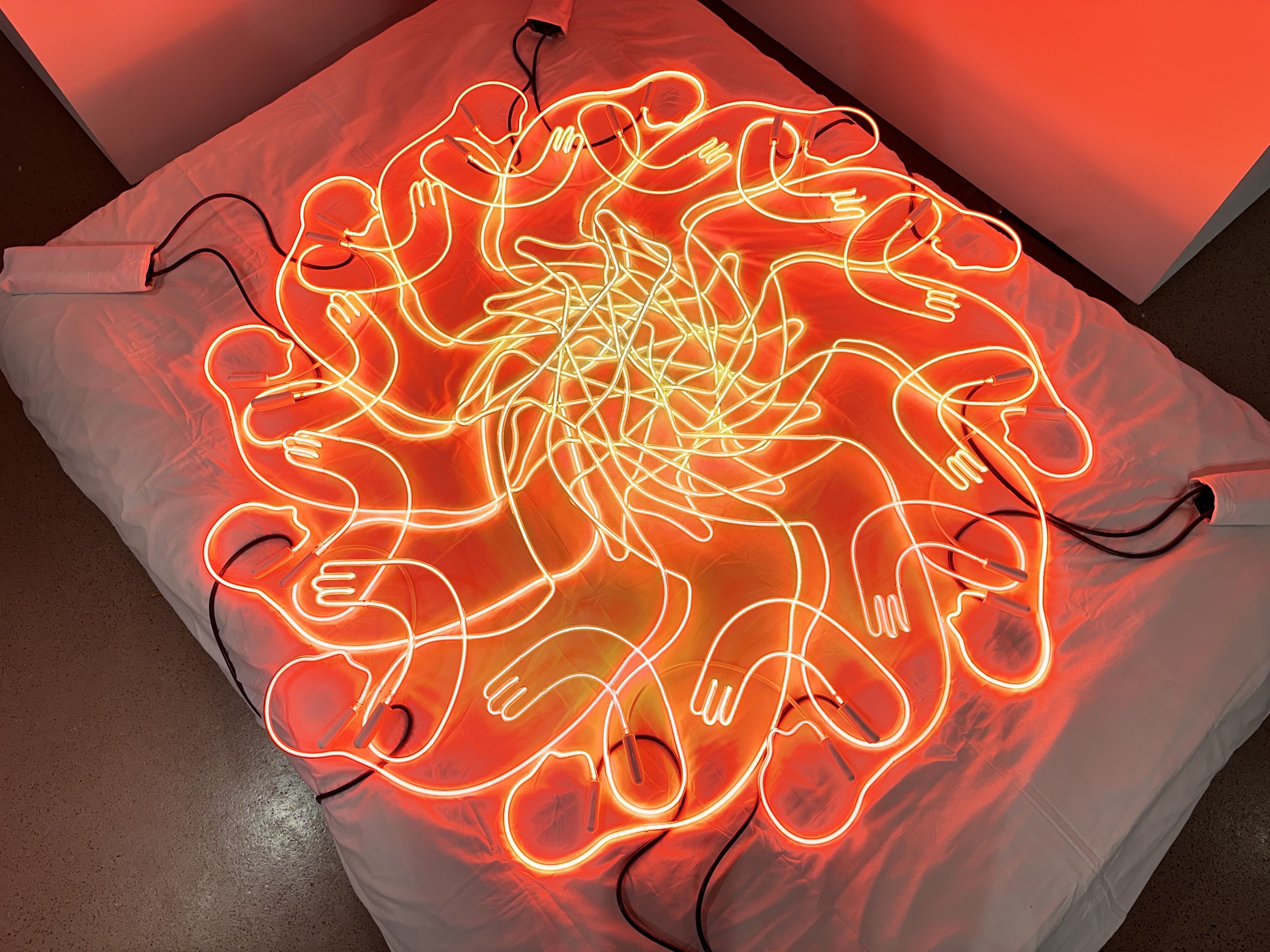
Yaelin Calaguas Kim, Relay, 2023. Courtesy of the artist
Yaelin Calaguas Kim, Relay, 2023. Courtesy of the artist
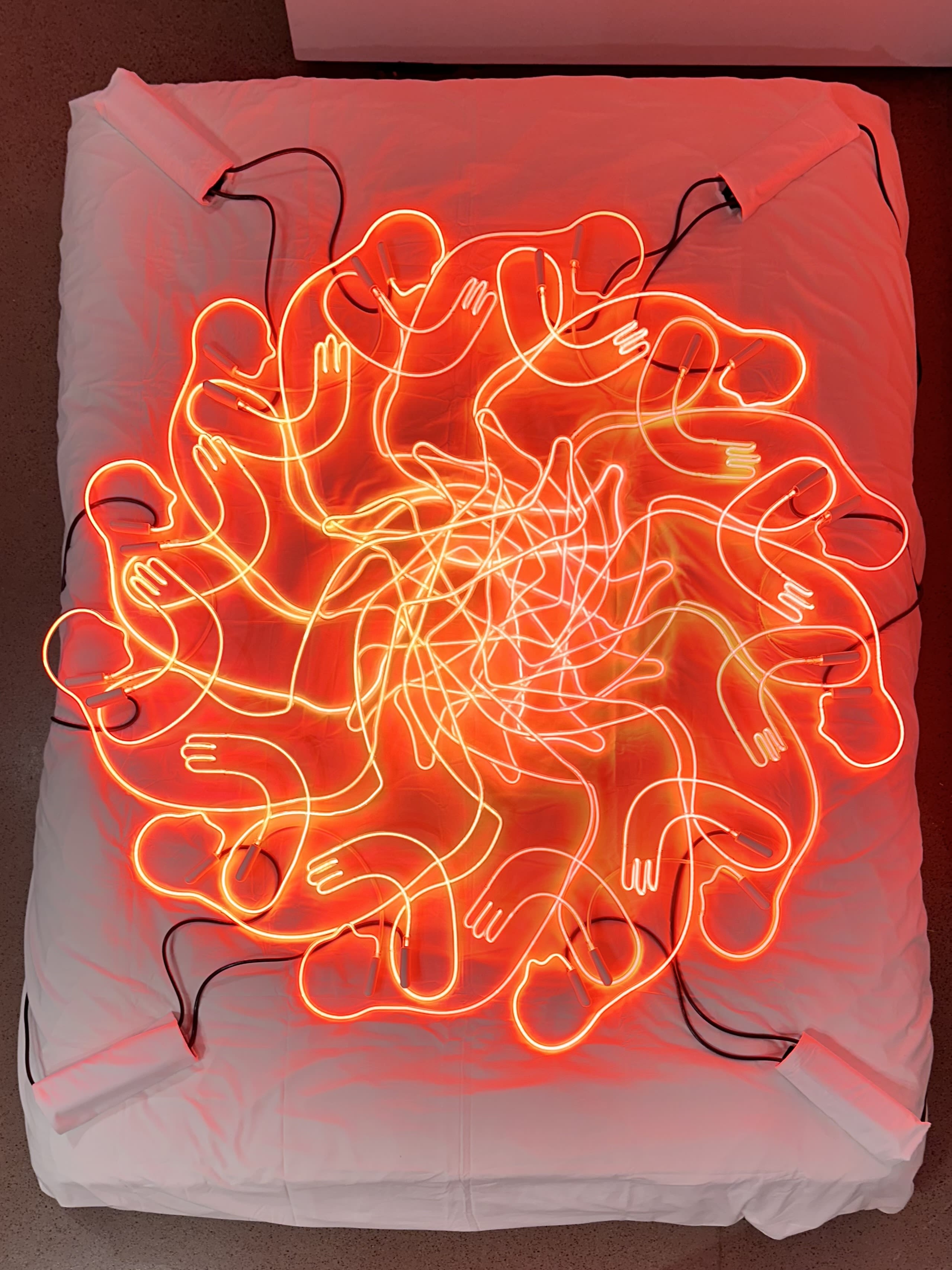
Yaelin Calaguas Kim, Relay, 2023. Courtesy of the artist
Yaelin Calaguas Kim, Relay, 2023. Courtesy of the artist
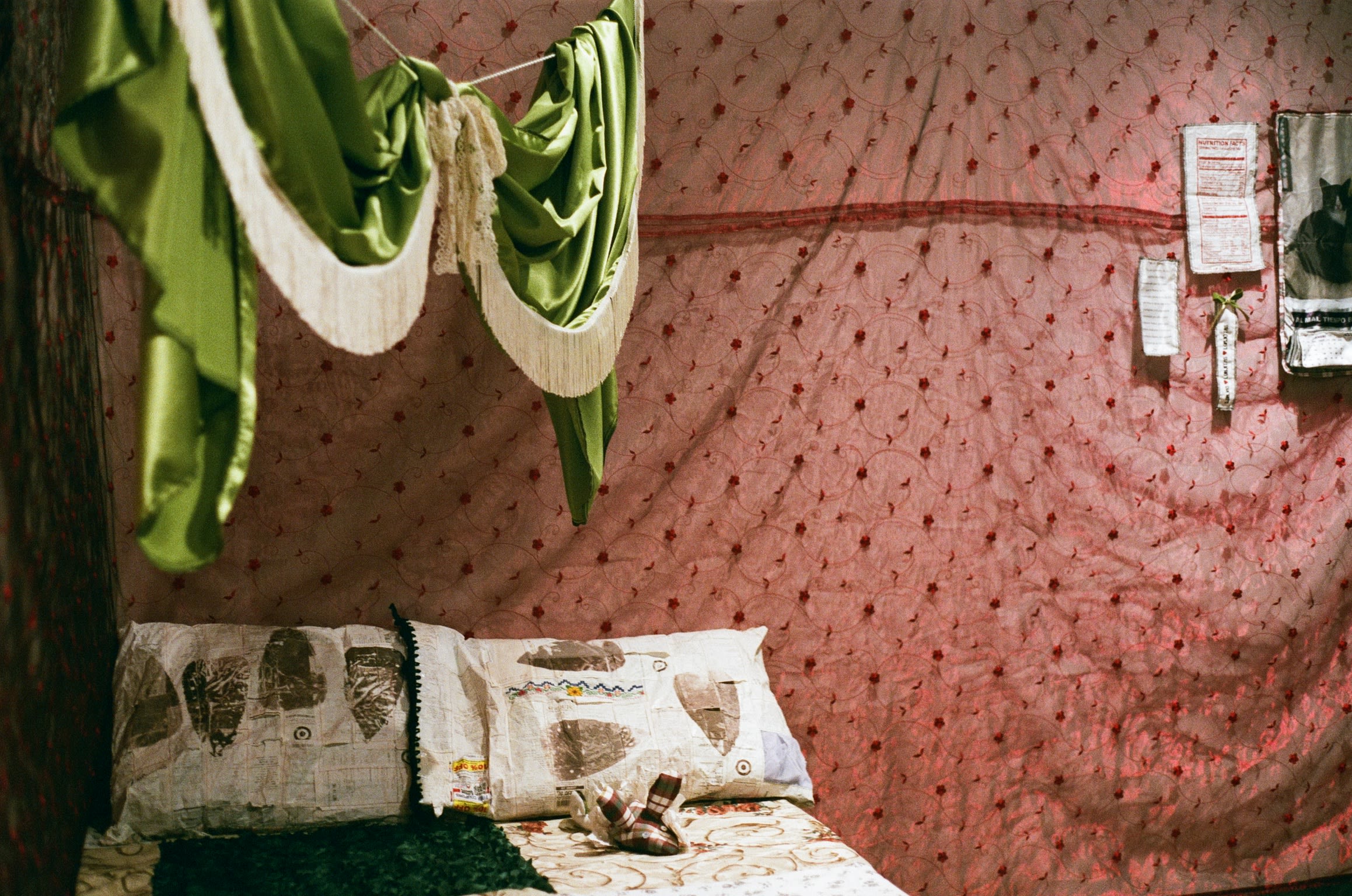
Isabela Ortega, Give The Pointless a Decent Resting Place (installation shot), 2023. Photographed by Siona Gupta
Isabela Ortega, Give The Pointless a Decent Resting Place (installation shot), 2023. Photographed by Siona Gupta
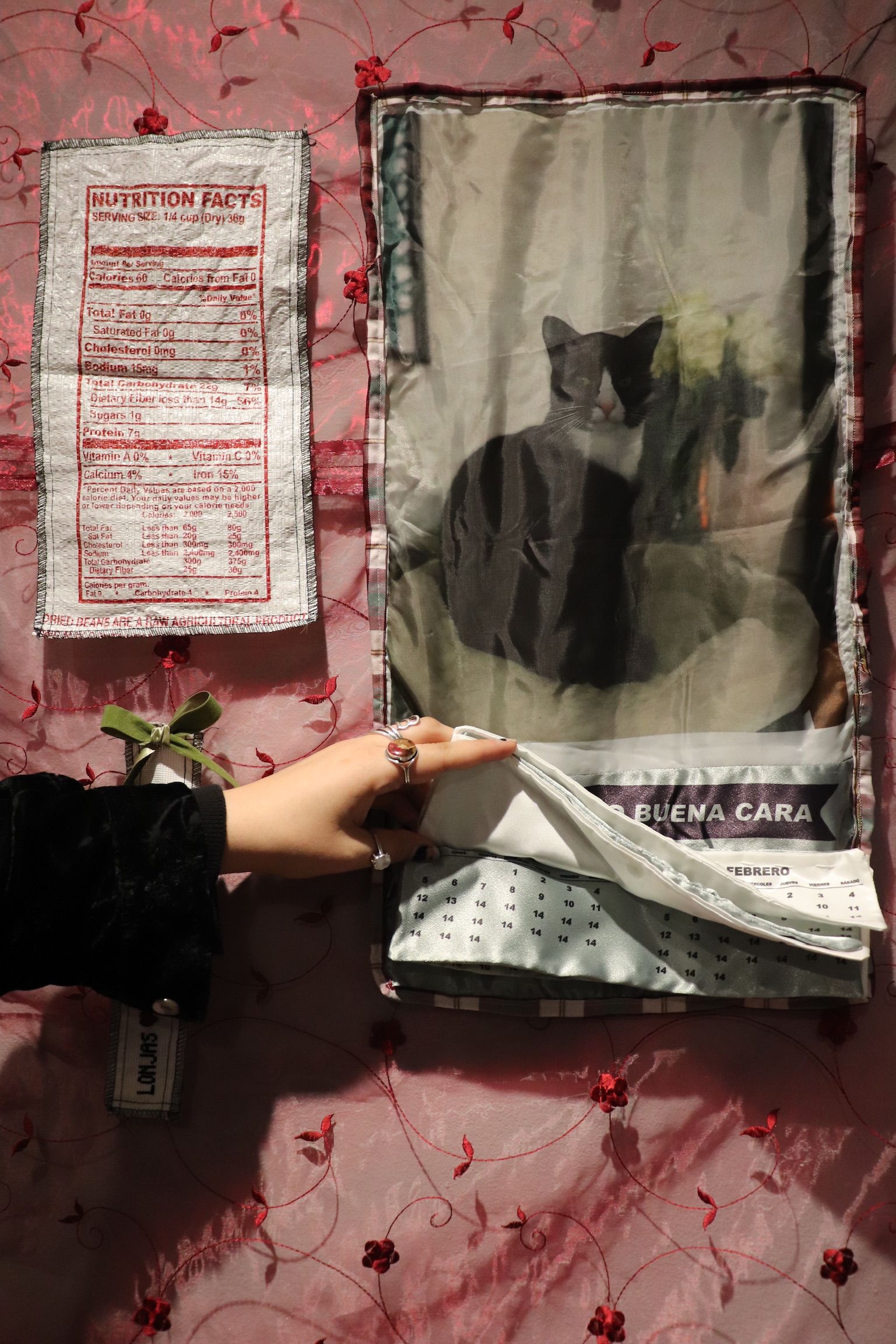
Isabela Ortega, Give The Pointless a Decent Resting Place (installation shot), 2023. Photographed by Siona Gupta
Isabela Ortega, Give The Pointless a Decent Resting Place (installation shot), 2023. Photographed by Siona Gupta
Isabela OrtegaBFA
Give The Pointless a Decent Resting Place is an installation that recreates the decorations of my room, inspired by the sense of displacement and grief as a result of my relocation from New Mexico to Chicago.
Women in my family pass down a lineage of fiber knowledge, excelling in quilt-making, knitting, and tailoring. Despite their creative prowess, their work is not collectively recognized as art on par with Picasso or Kahlo. Using repurposed fabrics, I transformed my childhood memories of household routines, including calendars, bags of pinto beans, and receipts, into decorations, elevating them to the status of art.
The bedroom’s ceiling, adorned with papel picado, a traditional Mexican paper-cutting technique used during celebrations, highlights the generative power of grieving. Common household objects are strategically dispersed around the room, telling deeper stories about everyday life. At the back, a mop symbolizes my mother's unrecognized labor of cleaning hotel rooms as an asylum-seeking Mexican immigrant, who, much like fibers, remains invisible in the modern world.
The familiar domesticity of the room is interrupted by small figurines of alebrijes, hybrid elements from Mexican folklore known as spirit guides. Each of these creatures holds a pouch with a poem, contextualizing their aspects of grief and offering guidance in navigating our tumultuous lives.
PsyikoBFA
I always aim to showcase my ability to unearth roots within myself. Throughout my life, I relocated every three years, residing in five different households. This constant movement coincided with my exploration of queerness, shaping my practice as a dynamic struggle to reconcile my queer and South Korean identities through clothing.
The piece, titled Fashion is Mother, locates my sense of belonging within my outfits. Given Korea's reputation for distinctive fashion culture and my upbringing surrounded by beautiful garments, this connection becomes particularly important. The artwork comprises three components fashioned from diverse fiber materials on raw canvas panels. At its core, I positioned three flowers symbolizing my personal “blossoming” into queerness, accompanied by dried grape vines intricately embroidered into the piece, conveying the concept of reaching outwards and attempting to establish roots. I intentionally perforated and mended the canvas surface using the darning technique, symbolizing my ongoing internal restorative processes.
Additionally, embroidery serves as a symbolic nod to tattoos, drawing inspiration from South Korea's booming yet still marginalized tattoo scene. Influenced by Buddhism, another facet of my Korean identity, I have internalized the notion that my embroidery practice serves as a form of self-mending and, hence, self-healing, that I offer to every queer person.
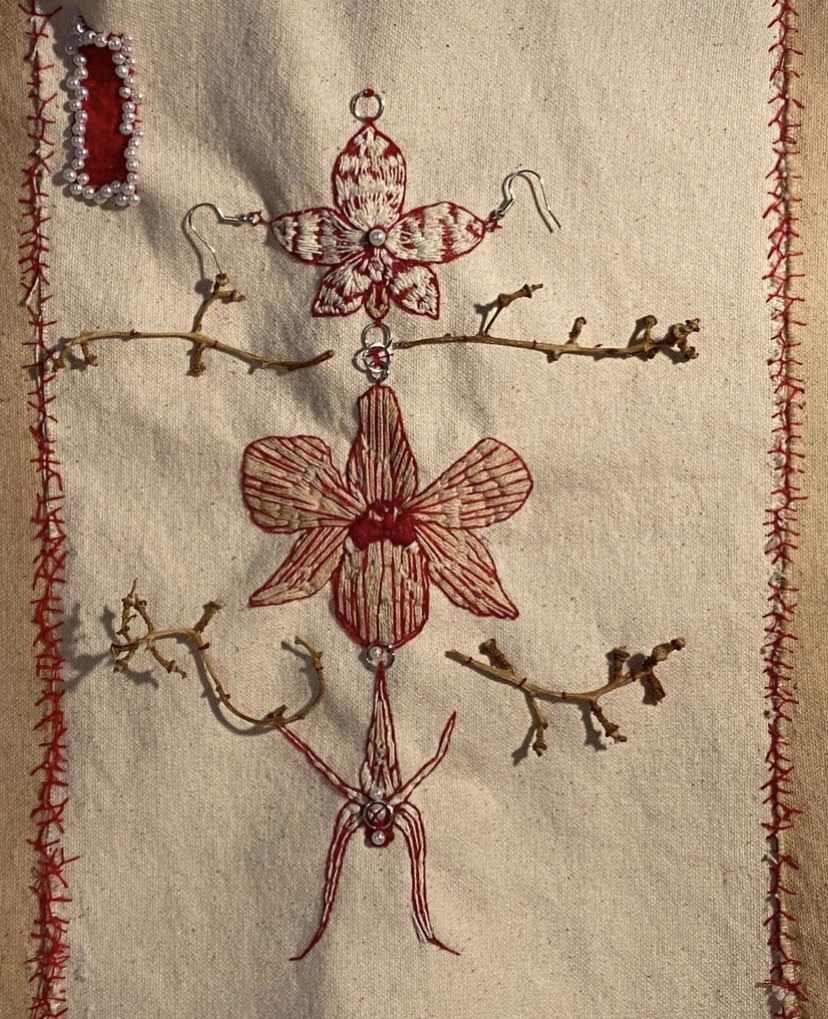
Psyiko, Fashion is Mother (fragments), 2023. Courtesy of the artist
Psyiko, Fashion is Mother (fragments), 2023. Courtesy of the artist
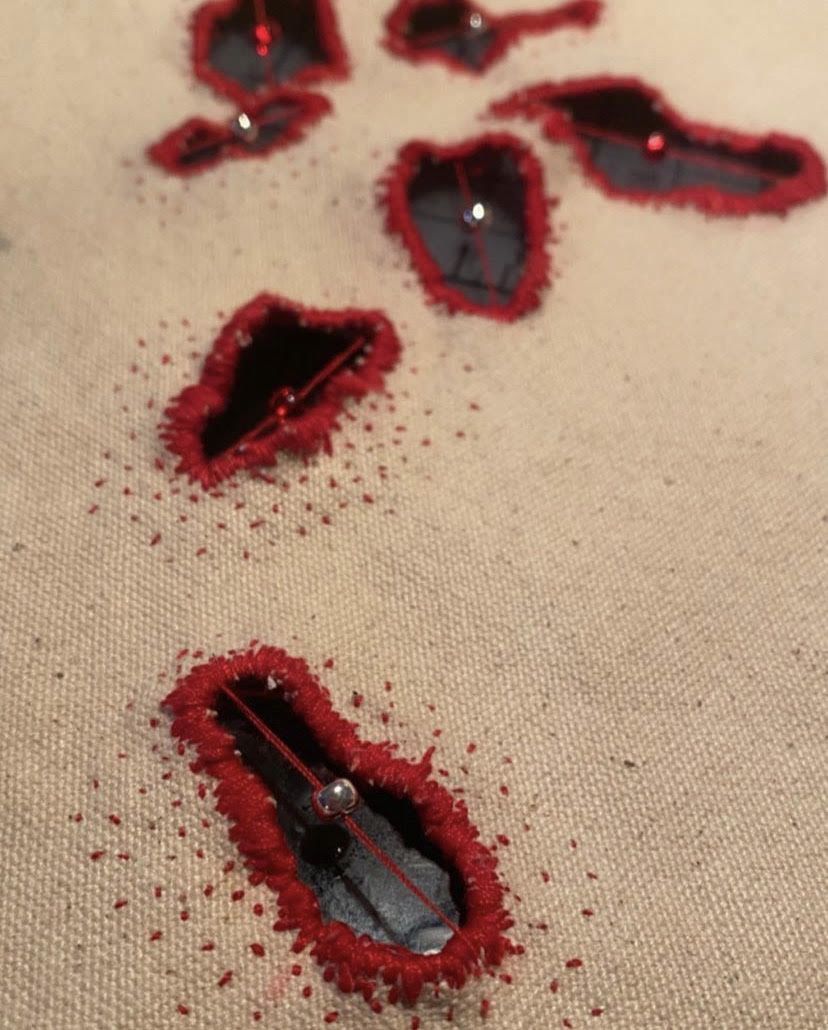
Psyiko, Fashion is Mother (fragments), 2023. Courtesy of the artist
Psyiko, Fashion is Mother (fragments), 2023. Courtesy of the artist
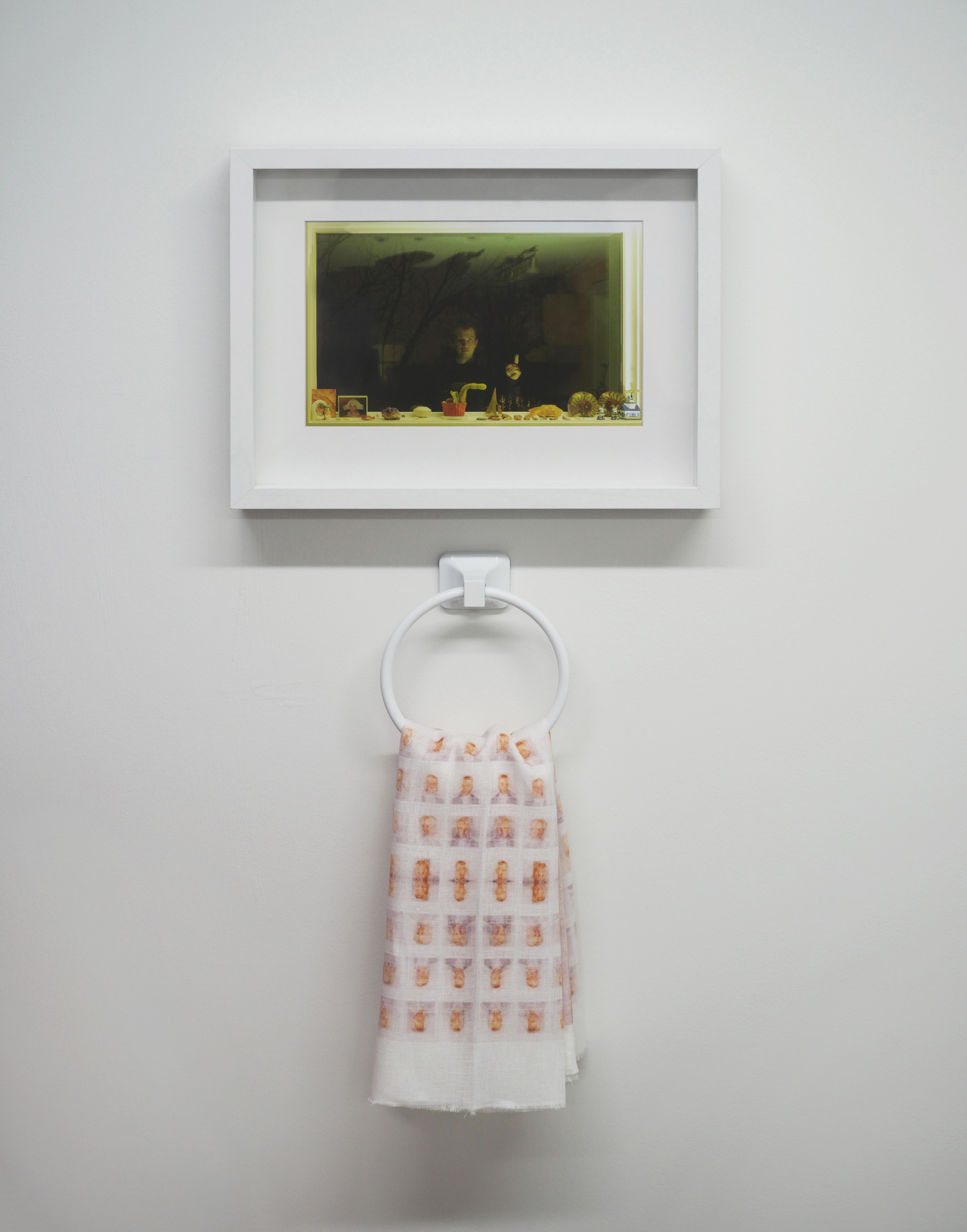
Rob Croll, Self-Objects, 2023. Courtesy of the artist
Rob Croll, Self-Objects, 2023. Courtesy of the artist
Rob Croll
MFA
For years, I thought of photography as an escape, using it to evade reading and writing theory. Sneaking out at night to take photos became a way to free my mind from omnipresent language. Later, working as a Spanish-English literary translator, I felt my mind crowded with other writers’ ideas after translating seven books in six years. Amid the social isolation during the pandemic I began to question who I was, and so I came to SAIC to find out. My time here revealed that I don’t have to confine my influences to a single source or limit my art to one medium. I have learned that I can embrace insights from music and literature and let them inform my photographic practice rather than keeping my interests compartmentalized.
This piece, titled Self-Objects, emerged from a friend’s request to create something for Open Studio Night at SAIC. When she asked me to “take up space” in the installation, I thought about the usage of that phrase and its irony given my identity. Using Google Lens on my school ID, I generated visually related images, forming a grid of random male portraits resembling myself. Printed on linen with a visible grid-like weave, the photo is a long exposure of me scrolling through this doppelganger archive.
Later, improvising in the studio, I paired the linen print with an old self-portrait in which I appear reflected beyond a windowsill cluttered with objects from my childhood house. The pairing of these two photographs draws inspiration from my background in music improvisation, infusing the photographic work with spontaneity and performance-like quality which I have discovered at SAIC. The result is a peculiar multipart self-portrait that shifts between representations of the individual and the archetype.
Michelle Alexander
MFA
The art world has always both intrigued and intimidated me, prompting a journey from a successful fashion career in New York to emotional exhaustion and burnout. After nearly six years as a designer, which could easily become an autobiographical sequel to The Devil Wears Prada, the daily psychological battles led me to a pivotal decision to return to my hometown of Montreal. During the pandemic, I ultimately realized that nothing made me happier than purely creating, urging me to redirect my path toward SAIC’s Post-Baccalaureate program, followed by an MFA in Painting and Drawing.
Initially, I imposed restrictions on my creative expression—to be a good artist, I thought, meant to avoid overt references to my anxieties and past fashion life. However, my piece Shell, part of the series Experiences of the Flesh, challenges these constraints. It symbolizes the dismantling of internal walls through the motif of skin, bridging my inner and outer worlds while remaining a barrier to overcome. The shape, molded with a heat gun, echoes my body and signifies transformation—whether shedding or growing. The meticulous process behind the creation of this piece involved me rolling on paper while being covered in graphite, printing on plastic, shaping, warping, and encrusting the structure with LED strings. Each piece reflects the complex yet liberating journey of me confronting fears and anxieties, ultimately reshaping myself inside and out. ■
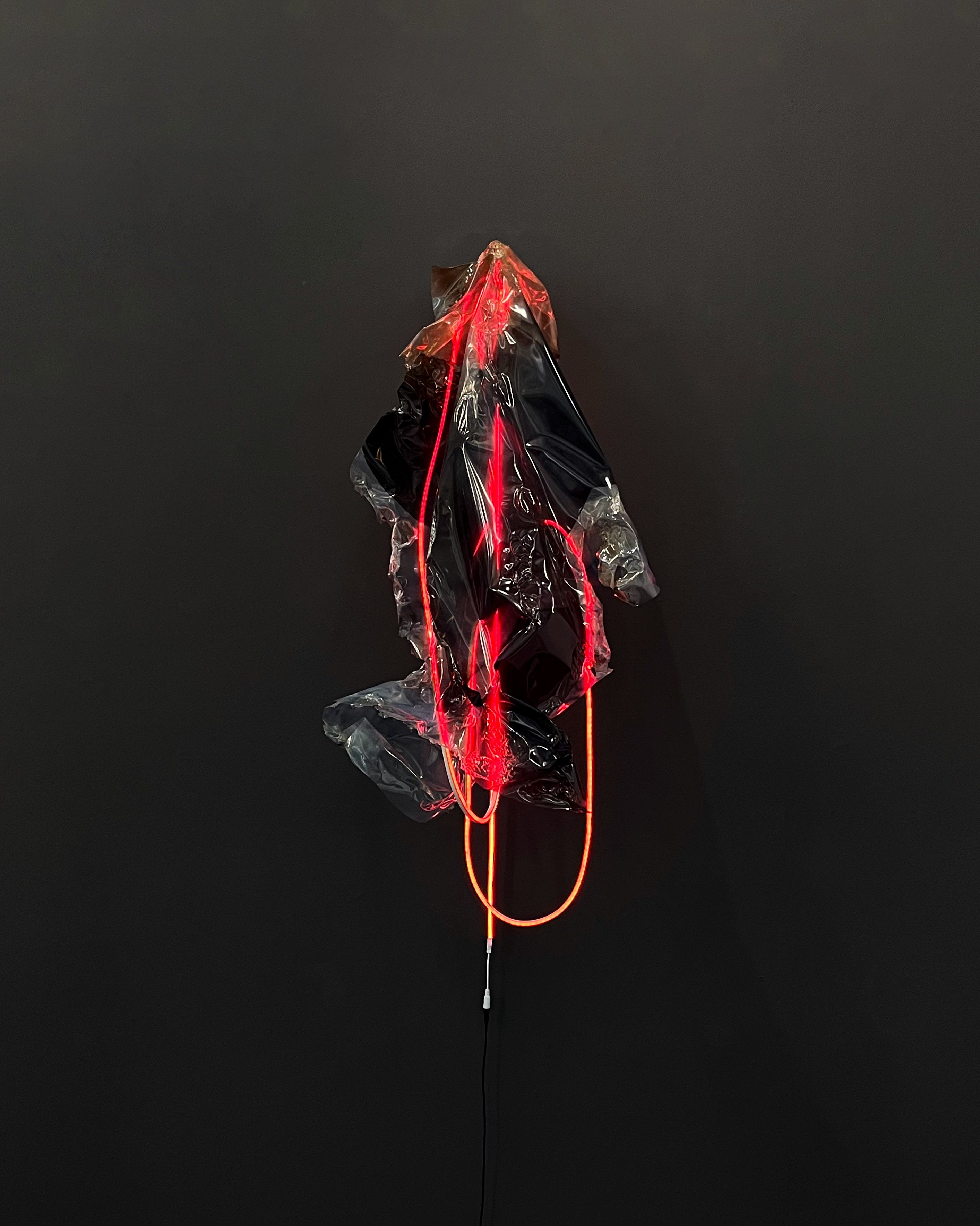
Michelle Alexander, Shell, 2023. Courtesy of the artist
Michelle Alexander, Shell, 2023. Courtesy of the artist
